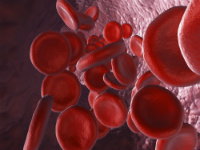Welcome back after a short autumn holiday break! Below are the 3 articles selected as suggested reading for this week by McMaster editors.
Screening for lung cancer
The balance of risks and benefits of procedures for lung cancer screening is important for the individual patient-clinician decision-making process. This paper provides data informing such decisions.
The authors summarized existing evidence to inform the Canadian clinical practice guideline panel. Their conclusion was that there is no sufficient evidence to support screening using chest x-ray (CXR) (with or without sputum cytology). Indicating the potential benefit of low-dose computed tomography (LDCT) screening, they pointed out that:
- Most data are coming from one US-based randomized controlled trial in which patients received 3 yearly LDCT studies (versus CXR). (See National Lung Screening Trial Research Team, Aberle DR, Adams AM, et al. Reduced lung-cancer mortality with low-dose computed tomographic screening.)
- Data apply to high-risk population (over 30 pack-year smoking history at the ages of 55 to 74, including the patients who quit).
- For lung cancer mortality, a relative benefit of 20% translated into 0.33% of an absolute benefit with the number needed to screen at about 300 (95% confidence interval [CI], 201-787).
- For overall mortality, a relative benefit of 6% translated into 0.46% of an absolute benefit with the number needed to screen at 219 (95% CI, 115-5556).
- The rate of false-positive results, which may lead to further noninvasive (positron emission tomography scans, high-definition computed tomography) or invasive (bronchoscopy, aspiration, biopsy thoracoscopy, resection) procedures, ranged between 10% and 25%.
- Among those undergoing follow-up invasive testing, the probability of major complications is around 5% (~0.32% if all screened patients are concerned) with as many as 1% of those tested dying as a result.
Thymectomy in myasthenia gravis
The benefits of thymectomy among patients with myasthenia gravis (MG) and without thymoma are not clear. This study confirms that such patient-important benefits are present.
The authors randomized 126 patients with mild to severe generalized MG of up to 3-year duration, aged 18-60 years, and with elevated levels of serum acetylcholine-receptor antibody. Medial sternotomy was performed by a thoracic surgeon trained by the study personnel. Patients with evidence of thymoma on computed tomography or magnetic resonance imaging were excluded from the study.
The benefits of surgical treatment included a lower Quantitative Myasthenia Gravis score (by 2.85 point on average, with a 2.3 point difference likely representing important improvement on this 39-point scale). Over the period of a 3-year observation, patients in the thymectomy group had lower requirements for prednisone (44 mg vs 60 mg for the alternate-day dose), a lower rate of requirement for azathioprine (17% vs 48%), and a lower frequency of hospitalizations for MG exacerbations (9% vs 37%).
Stroke: time to treatment with endovascular thrombectomy and outcomes
Endovascular thrombectomy provides benefit to patients with ischemic stroke due to intracranial large-vessel occlusion and is recommended by current practice guidelines. This publication provides information about the size of this benefit and its time-dependency.
Authors of the primary studies on the subject combined the analysis of individual patient data for over 1,200 patients. The majority of those patients were treated with intravenous thrombolysis. The benefits of thrombectomy were statistically significant up to slightly over 7 hours from the beginning of symptoms. The benefit of the therapy was large: the odds of functional independence among those treated with thrombectomy versus medical treatment alone up to 3 hours from symptom onset were 2.8 (95% confidence interval [CI], 2.1-3.9). Twenty more patients per 100 treated had independent function with treatment delivered within about 120 minutes of symptoms beginning. By 5 to 6 hours, this benefit was still present but its size was approximately lower by half.
 English
English
 Español
Español
 українська
українська





